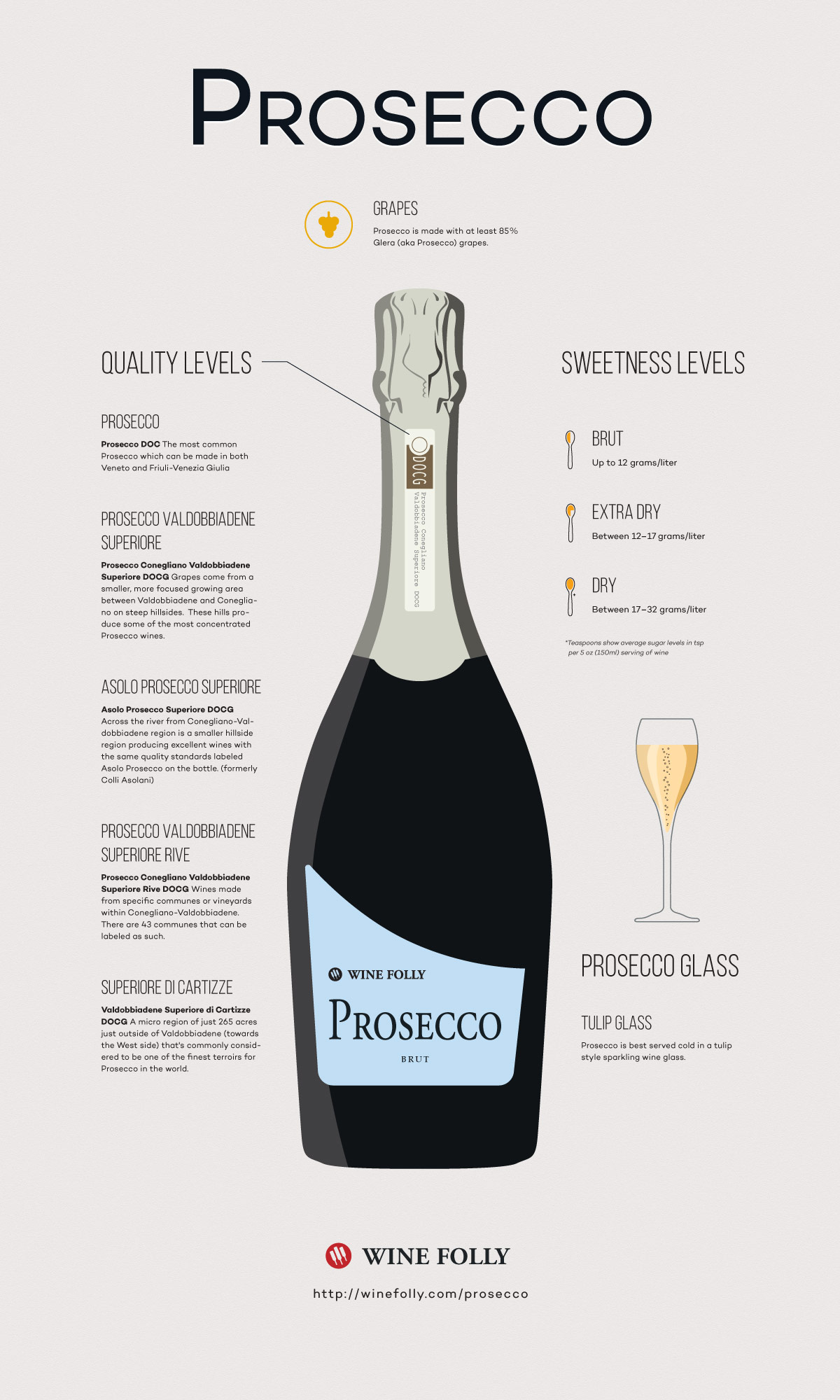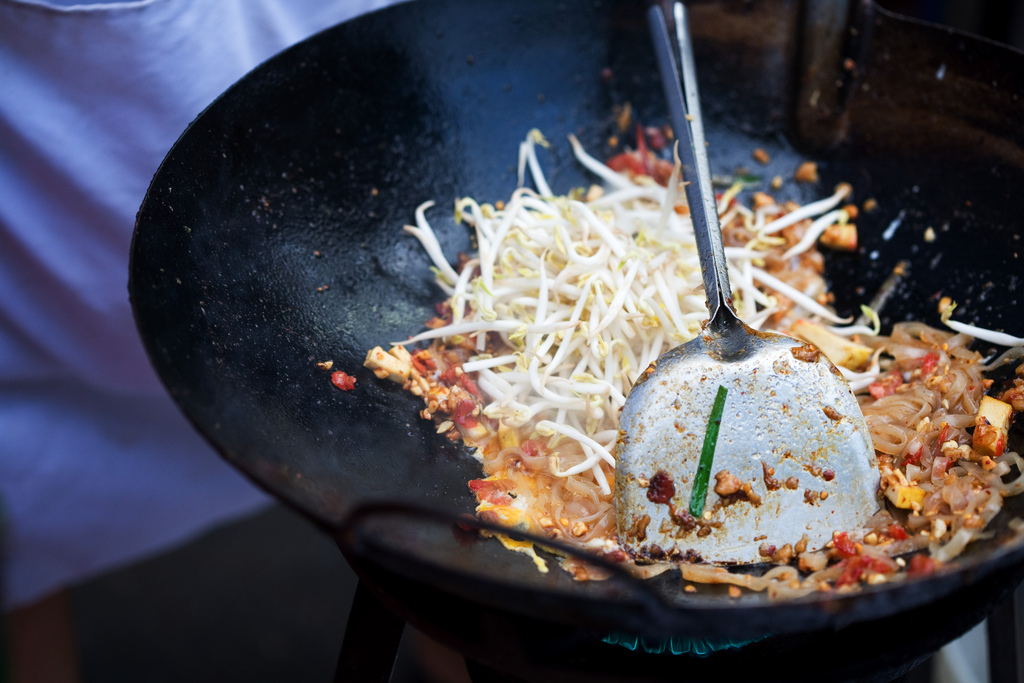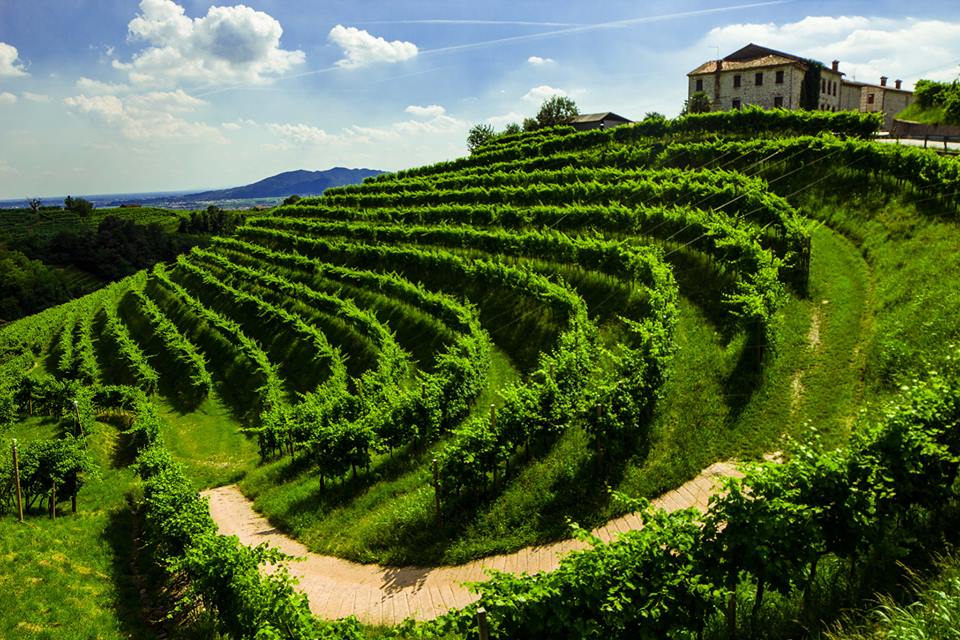Prosecco wines are Italy’s most popular sparklers. While it’s often compared to Champagne, it’s made with different grapes and a different winemaking method.
As you’ll soon discover, there’s more to Prosecco than affordable bubbles. In fact, the region is undergoing a quiet revolution. Learn more about this fascinating sparkling wine, including how to choose Prosecco, the different styles, what foods to pair with it, and the main winemaking region: Valdobbiadene.
Guide: Explore the delicious world of Prosecco Superiore in the Conegliano Valdobbiadene Wine Region Guide.
“There’s more to Prosecco than affordable bubbles.”

What Is Prosecco?
Technically, Prosecco is a sparkling wine that originates from the Valdobbiadene region in Veneto, Italy.
The wine is made with the Glera grape and vinified using the Charmat sparkling method, which gives wines approximately 3 atmospheres of pressure. Since 2020, Prosecco Rosé has also joined the family. Made with Glera and a touch of Pinot Noir, this pink sparkler must spend at least 60 days on the lees, giving it more texture and finesse than standard Prosecco.
This means Prosecco’s bubbles typically last longer than beer’s (1.5 atmospheres), but not as long as Champagne’s (5–6 atmospheres). The result? Livelier than a lager, gentler than a grand marque.
COMPARE Get more info on Champagne vs. Prosecco.
Prosecco Taste (Is It Sweet or Dry?)
Most Prosecco wines are produced in a dry, brut style. However, due to the grapes’ fruity flavors of green apple, honeydew melon, pear, and honeysuckle, they usually seem sweeter than they are.
Even though brut is the most popular sweetness level of Prosecco, you can find sweeter styles if you seek them out. Here is how Prosecco labels indicate sweetness:
- Brut 0–12 g/L RS (residual sugar) – Up to a half gram of sugar per glass
- Extra Dry 12–17 g/L RS – Just over half a gram of sugar per glass
- Dry 17–32 g/L RS – Up to one gram of sugar per glass
By the way, if you haven’t had an Extra Dry Prosecco yet, this style offers a great balance between Prosecco’s fruit, tingly acidity, and subtle sweetness.

How To Serve Prosecco Wine
Prosecco should be served cold (38–45 °F / 3–7 °C). Most will agree that a sparkling tulip glass is best for serving Prosecco. It’s tall and slender, which helps preserve the bubbles’ finesse for longer. That said, many wine professionals now prefer tulip or even white wine glasses for high-quality Prosecco, as they better capture the wine’s aromatics and complexity.

The Perfect Mimosa Wine
If you love brunch, Prosecco is our favorite pick for a perfect mimosa. The fruitiness in this wine amplifies the citrus flavors of the orange juice, and it pairs well with brunch-style foods. By the way, a great mimosa is two parts sparkling wine and one part juice.

Pairing Food With Prosecco
Prosecco is surprisingly versatile and pairs well with a wide range of cuisine genres and dishes. It’s a wine you can serve as an aperitif (before food), but also works well alongside the main entrée.
The idea behind pairing Prosecco is to use it as a palate cleanser alongside medium-intensity foods (chicken, tofu, shrimp, or pork dishes). Due to its sweet aromatics and bubbles, Prosecco pairs well with spicy curries and Southeast Asian cuisine, including Thai, Vietnamese, Hong Kong, and Singaporean dishes. Prosecco also pairs well with salty, oily, or fried dishes, such as fritto misto, arancini, and tempura, as well as with Italian cured meats like prosciutto di San Daniele and sopressa.

Tips On Finding High-Quality Prosecco Wine

- Prosecco DOC: Prosecco’s most common quality level, which can come from nine provinces spanning the Veneto and Friuli-Venezia Giulia regions.
- Prosecco Conegliano Valdobbiadene Superiore DOCG: A blend of grapes from a smaller, more focused growing area between Valdobbiadene and Conegliano in the hills, which produces Prosecco wines with high concentration. As of 2023, Conegliano Valdobbiadene Prosecco Superiore DOCG introduced official UGAs — 43 specific areas that producers can include on labels to highlight distinctive terroirs, much like the cru system in Champagne.
- Asolo Prosecco DOCG: Across the river from the Conegliano-Valdobbiadene region, you can find another smaller hillside region that produces excellent wines with high-quality standards. Wines are labeled Asolo Prosecco on the bottle (formerly Colli Asolani).
- Prosecco Conegliano Valdobbiadene Superiore Rive DOCG: Wines made from specific communes or vineyards within Conegliano-Valdobbiadene. There are 43 communes that can have their name on the label.
- Valdobbiadene Superiore di Cartizze DOCG: A micro-region of only 265 acres just outside of Valdobbiadene (towards the west side). Many consider this to be one of the finest terroirs for Prosecco in the world.
DID YOU KNOW? Col Fondo is a rare, natural Prosecco

Where Prosecco Wine Is Made
The Conegliano-Valdobbiadene region is a stunningly beautiful set of green hills covered with vineyards. It rains quite a lot here, and, as a result, the best vineyards are generally on southern-facing slopes with good drainage and gentle winds that dry the grapes out after their daily shower. Prosecco has a history here of around 300 years (although earlier styles were likely less bubbly).
In 2019, the vineyard landscape of Conegliano Valdobbiadene was named a UNESCO World Heritage site, drawing global attention to the area’s cultural and historical significance and making it a hotspot for wine tourism.
Producers are also contending with climate change; harvests are happening earlier, and acidity management has become critical. In response, many estates are embracing sustainable and organic viticulture, particularly in the steep, erosion-prone slopes of Valdobbiadene.
If you have an adventurous streak, one of the region’s highlights is the fun-and-challenging Gran Fondo Prosecco cycling race, which weaves up through the hills. Anyone can participate, and you can celebrate your ride with a glass of local wine.
